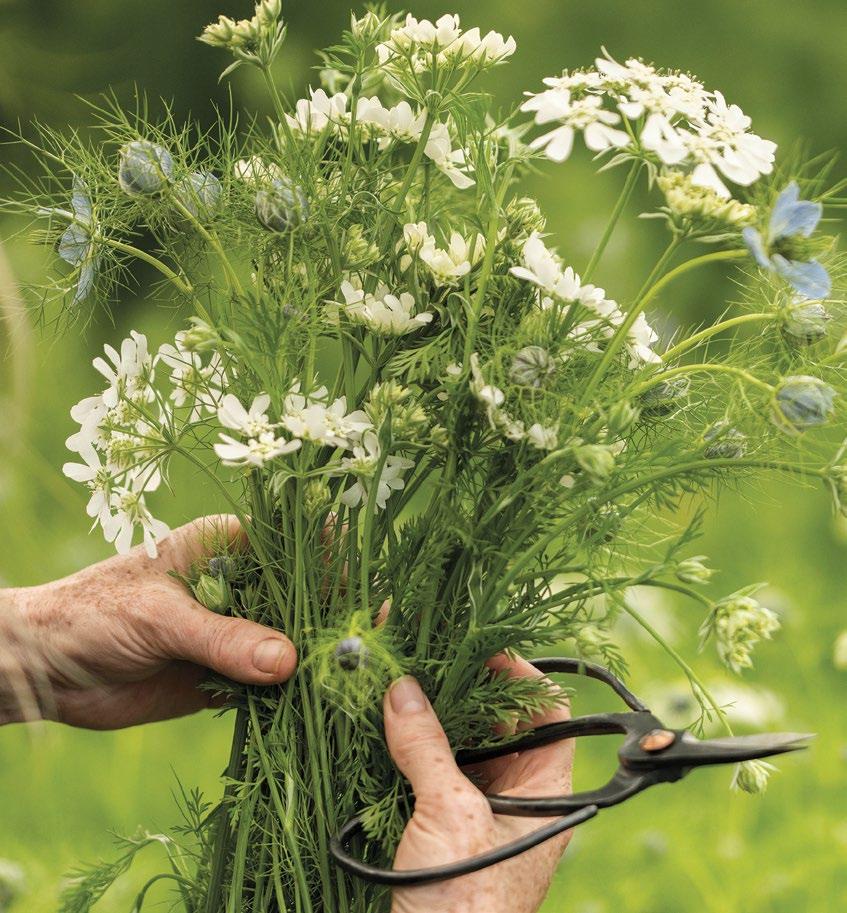




Now is the time for dreaming and planning in the garden. We’ve filled these pages with advice from our friends and partners, to bring you inspiration for the growing months ahead. So as the season unfolds, we hope this edition will serve as a guide to help you bring your dream garden to life.
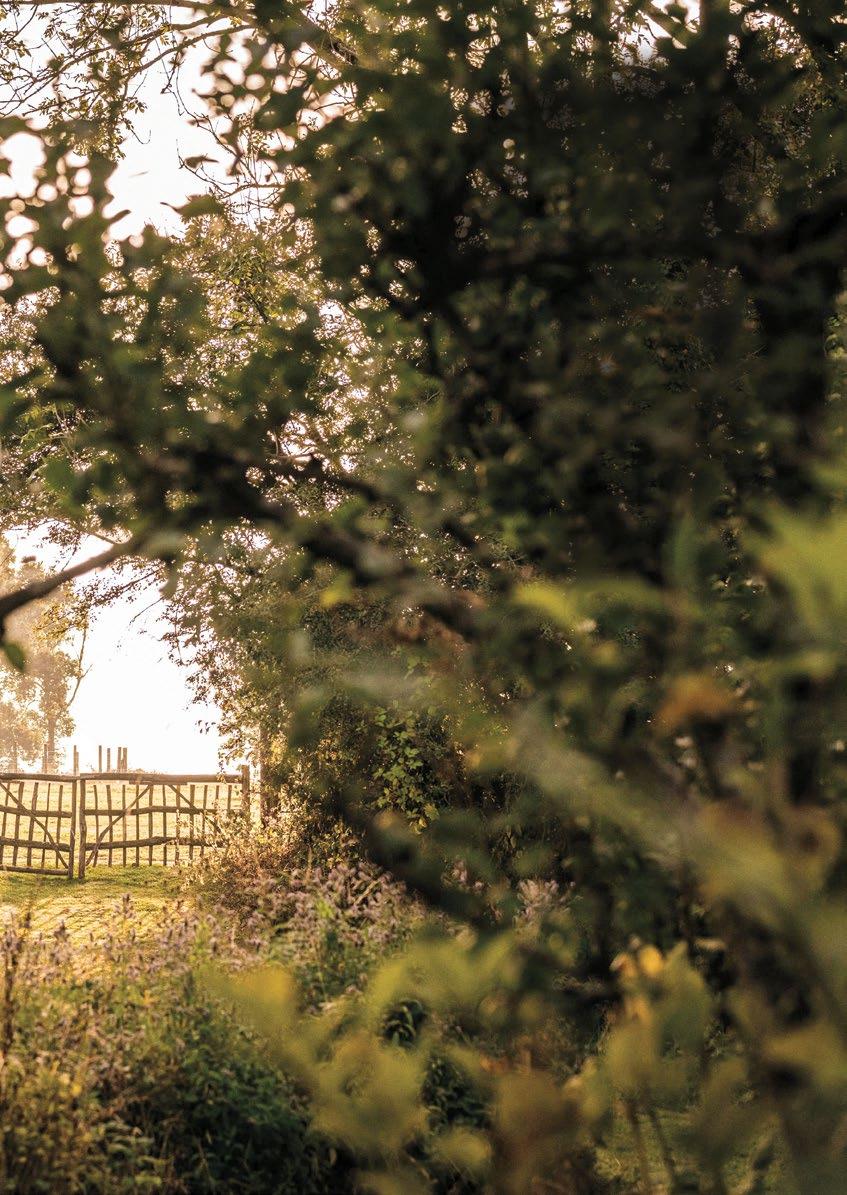
04 HOW TO USE SHRUBS & GRASSES IN THE GARDEN Lucy Willcox 07 THE PLANT LIBRARY: CREATING A NEW GARDEN AT HOME Tom Stuart-Smith 10 BEDFELLOWS Crocus 12 PLANT DIARIES
Peter Clay - Crocus 14 THE TOOL SHED EDIT
Julia Leakey - Crocus
16 THE DRIED FLOWER CUTTING GARDEN
Bex Partridge
20 ESCAPE TO THE GARDEN
Clare Joiner - Crocus
22 WHY WOMEN GROW
Alice Vincent
Whether you are editing an existing bed, or starting from scratch, spring and early summer is a great time to update your garden. When I design a space, I always think about my planting plan in layers. Starting with shrubs, then grasses, with perennials and bulbs last. This is because shrubs and grasses are the mainstay of the garden, acting as a foil for my succession of bulbs and perennials.
My most important rule is to contrast form with texture. Form meaning the shape of the plant and texture being the leaf size. A domed yew, with its tight form, would contrast well with a spiky grass, such as Hakonechloa macra This combination would act as the backbone of my design and I would repeat it throughout my border.
Finally, shrubs and grasses are brilliant at creating continuity and flow. Perennials often have specific conditions in which they like to be planted. But shrubs and grasses are mainly happy in both sun and shade. So use similar specimens throughout the garden to create a sense of connection. Here and over the page are some of my favourite shrubs and grasses I use in my planting design.

Clipped shrubs for contrast I use lots of clipped forms of shrubs in my planting schemes such as yew hedging or Ilex crenata either in ball domes or in low hedges. They go particularly well with grasses which bring in movement, such as Hakonechloa macra. Team this with a Bergenia 'Bressingham White' and you’ll have a winning combination you can use throughout the garden.
Shrubs and grasses are the backbone of any good garden design, and after trees, they’re the first thing I think about when approaching a planting plan. By starting with them you’ll bring structure and interest to your garden and help it look good throughout the year. Here are my guiding principles on using shrubs and grasses in the garden.
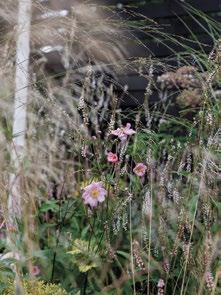
I particularly like grasses which you can see through, such as Molinia caerulea subsp. arundinacea 'Transparent', Deschampsia cespitosa or Calamagrostis × acutiflora 'Karl Foerster' Use them at the front of your bed to create a lovely veiled effect to see the perennials behind or to create a sense of privacy for a seating area.

Whilst more of a sub-shrub, I use euphorbias a lot in my planting schemes because they give you a brilliant evergreen base, but also a lime green pop in spring. They're also great en masse! Rosemary, with its lovely steel grey colour, is also a great choice - particularly if you want to bring scent to the garden.


This is a great grass to embrace the changing seasons. One of the earliest grasses to come back up after a winter cutback, they will bring a lovely lime green to your garden. They stay this colour until autumn when they turn a beautiful rustic shade. They’re also very useful for softening a hard path edge. It’s a staple grass in my garden designs.
Here is an example of one of my own planting plans and how I approach my design in layers. The scheme will provide months of interest; from bold evergreen backbone to gorgeous ornamental grasses and flowering perennials.
Border type Full Sun/Part Shade Border Moderately fertile, moist, well-drained soil
First, I think about my shrubs and grasses. Dedicating at least half of my plan to evergreens to provide structure and interest throughout the year.
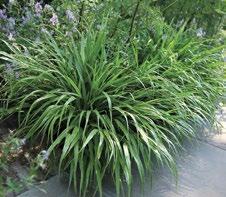
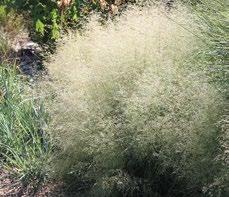

Then, I choose my perennials based on what will create contrast with my shrubs and grasses through form and shape.

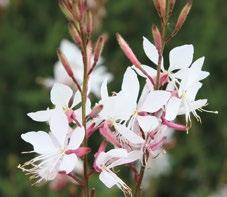
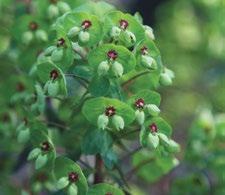
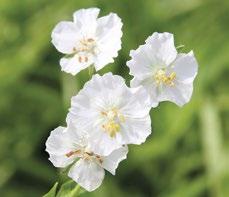


Garden Designer Lucy Willcox has been producing Award Winning Gardens since 2007, from contemporary courtyards to large classic gardens. Discover Lucy’s Crocus Border Collection at bit.ly/crocus-lucy-willcox-border
Words Tom Stuart-Smith on Scribehound
In the spring of 2020, amidst the global pandemic, we started building a community garden in an old orchard near our home in Hertfordshire, just 20 miles from central London.
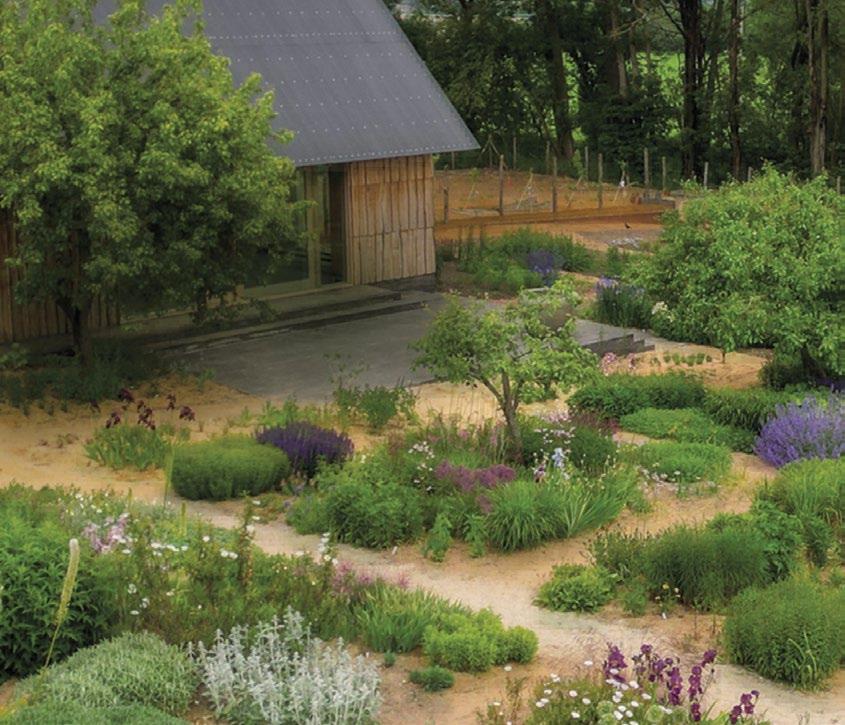

My wife, Dr Sue Stuart-Smith, and I had been talking for some time about the benefits of gardening and connection with nature for mental health and she had spent five years researching and writing her book, 'The Well Gardened Mind'. It was published just as Covid was cutting its ghastly swathe across the world.
At the same time, I was moving my studio out of London. I realised, rather belatedly, that the garden here at home could be a wonderful asset for learning and that if I wanted my studio to continue working on greener, more plantbased projects, it was going to be much easier if we were all in the countryside, surrounded by the stuff.
So, two things came together, Sue's book created the framework of ideas, and my studio provided the fuel. Our first thought was that we would create a local hub for any educational activity based on gardening and make it available to those who might benefit most. It would comprise a building for teaching, activities and events, and it would be surrounded by a garden. We cashed in our savings, remortgaged our house and set up a not-for-profit company, The Serge Hill Project for Gardening, Creativity and Health. We then commissioned our son Ben to design a beautiful building made with a clay floor and clad in split-faced oak boards harvested from the woods around us.
But what sort of garden was it going to be?
Our first thoughts were that we would have some vegetables, some flowers, some nice messy areas for schools, and perhaps a wildflower meadow. I also wanted my design team to have the opportunity to learn more about plants, so thought it was a good idea that everyone who wanted to might curate their own patch of planting. We gave everyone a budget and the week before the first lockdown a lorry full of plants arrived. I remember lining them out in temporary trenches with that feeling of mild desperation that creeps in when a project is not quite getting off to a start you had dreamt of. This wasn't so much because of the very precarious state that the pandemic induced in us all. It was more that I realised, as I was unpacking the plants, that my idea for the garden was very flawed.
Something that was immediately obvious, as we lined out rows of Deschampsia and Echinacea, was that we were fashion victims. Many of the team had ordered similar plants, perhaps inspired by a recent magazine article or a garden visit. More fundamentally though, was the realisation that the garden plot concept might breed an uncomfortable competitiveness. And what would happen if someone, having created a brew of tomatocoloured Echinaceas and rusty Achilleas (all doomed to die after a few years) then left the studio? Who would look after the ensuing mess!
The pandemic came at a good moment for the project
I must confess, it gave us time to think. As that uncannily glorious spring advanced, I mused on what this garden could be, and a few things seemed obvious. First, it must have as much opportunity for learning as possible and should be something that volunteers would want to care for. Almost more importantly, it should not be something obviously designed in a personal style. It felt right to get away from the idea that the designer produces a plan with a flourish and then other people look after it.
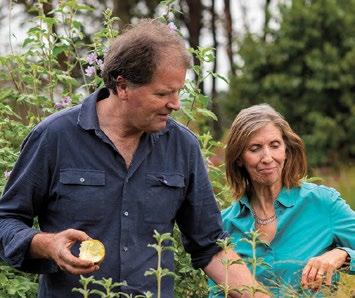
The idea of a library of plants started to emerge
I have always been drawn to the stock beds of great nurseries like De Hessenhof in the Netherlands, where you actually see how the plants grow, and you feel as if you are in a sweet shop of plant delights. I realised that if you could plant a huge variety on a simple grid system with a good database, then it could develop into a wonderful resource for learning. So, with the idea half-formed, I persuaded Charlie Harpur, who had worked for me before but had left to do the Kew Diploma in Horticulture, to come back and set up the Plant Library. Over the course of the next year, we planted nearly 1500 different perennials in a grid pattern in front of the new building which was starting to emerge out of the ground. The plants are located according to the conditions they prefer, and we always put one plant next to another that will contrast with it so that there is less chance of them getting muddled up.
We are lucky with our site. The northern half is in full sun on higher better-drained ground, while the southern part is in the shade of an adjacent copse and for the most part sits over heavy clay. We accentuated this difference by laying 4 to 6 inches of sand on the top half and 4 inches of green waste on the bottom. At the top, we grow things like bearded Iris, many sages, Amsonias, Baptisias, and other sun-loving, drought-tolerant plants and after

the first couple of months, we have never watered. On the lower wetter part we can grow Rodgersias, Actaeas and Epimediums.
After setting up the plant library Charlie moved to do amazing things in the rewilded garden we helped to create at Knepp and now the Plant Library is managed by Millie Souter who brings a similar combination of spectacular energy and enthusiasm. Like Charlie, she is a marathon runner - a useful quality in a gardener, and she is a great communicator and energiser. This has been essential in bringing together a brilliant group of volunteers who meet once a week to help with looking after the space. Lots of cake is involved.
I had imagined that the overall effect of having so many different plants all huddled in together might be visually chaotic. But even in its most flowery moments, if there is something of a happy cacophony, it is more like being in a gorgeously sensual Klimt painting than on the Las Vegas Strip. Yes, sometimes a screaming poker or a Coreopsis seems a bit boisterous, but the overall effect is remarkably unified and fabulously full of detail. When we have school visits, and we have had about 20 in this our first year of operation, the kids are drawn to the plants like pins to a magnet. Its maze-like structure and vast complexity make for an almost endless treasure hunt.
I wandered through it yesterday, a dull, cold mid-October morning, but there were many plants still in flower and a good deal of colour. I noticed Silphium mohrii and Strobilanthes rankanensis, two favourites of mine amidst many grasses waving about in the breeze. Panicum amarum ‘Sea Mist’ and Sorghastrum nutans 'Sioux Blue' caught my eye, two tall, elegant, drought-tolerant plants I didn’t know two years ago. Vernonia lettermannii is a plant that has been looking good all summer, even before the tight clusters of Tyrian purple topped it off. Actaea 'Queen of Sheba' must be one of the finest of this beautiful genus, with long-lasting flowers, handsome burnished foliage and heady scent. And I can’t finish without mentioning one of both mine and Millie’s favourite plants, Glycyrrhiza yunnanensis, the Yunnan liquorice, a legume with handsome, shiny, pinnate leaves and spectacular seed heads; clusters of bristly, rose-rufus pods that gradually turn brown and split as winter advances, by which time each resembles, in miniature, some ghastly instrument of medieval torture.
Scribehound Gardening gives you inspiration, expertise, and joy from 30 of the best gardening writers, with exclusive columns every day that you can listen to or read. Get a two week free trial period and 40% when you subscribe at scribehound.com/tomss

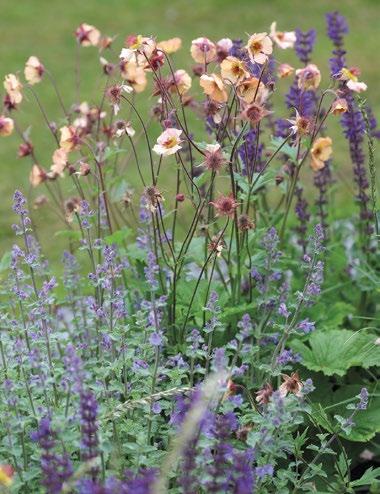
This year, we are launching our ‘Bedfellows collection’, a curated selection of winning, trusted plant pairings from some of the best in the business. Not only do these combinations look incredible together, but there’s also a wide choice to help you navigate to the right combination of plants for the space you’re looking to fill.
To find out more, visit: www.crocus.co.uk/curatedcollections
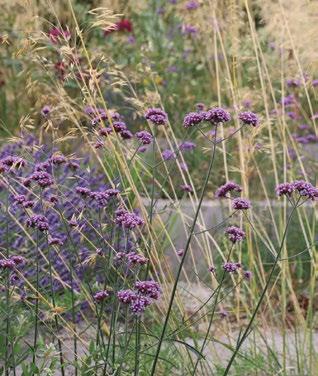
Bedfellow collections, clockwise from top Garden Designer Lucy Willcox’s ‘Indigo summer’ combination: Astrantia major subsp. involucrata 'Shaggy', Salvia × sylvestris 'Mainacht', featured here with Euphorbia × martini. Garden Designer Henry Agg’s 'Purple veil' combination: Stipa gigantea, Verbena bonariensis. Crocus Co-founder Mark Fane’s 'Dots & spires' combination: Nepeta racemosa 'Walker's Low', Geum 'Mai Tai' (PBR) (Cocktail Series), featured here with Salvia nemorosa 'Caradonna'
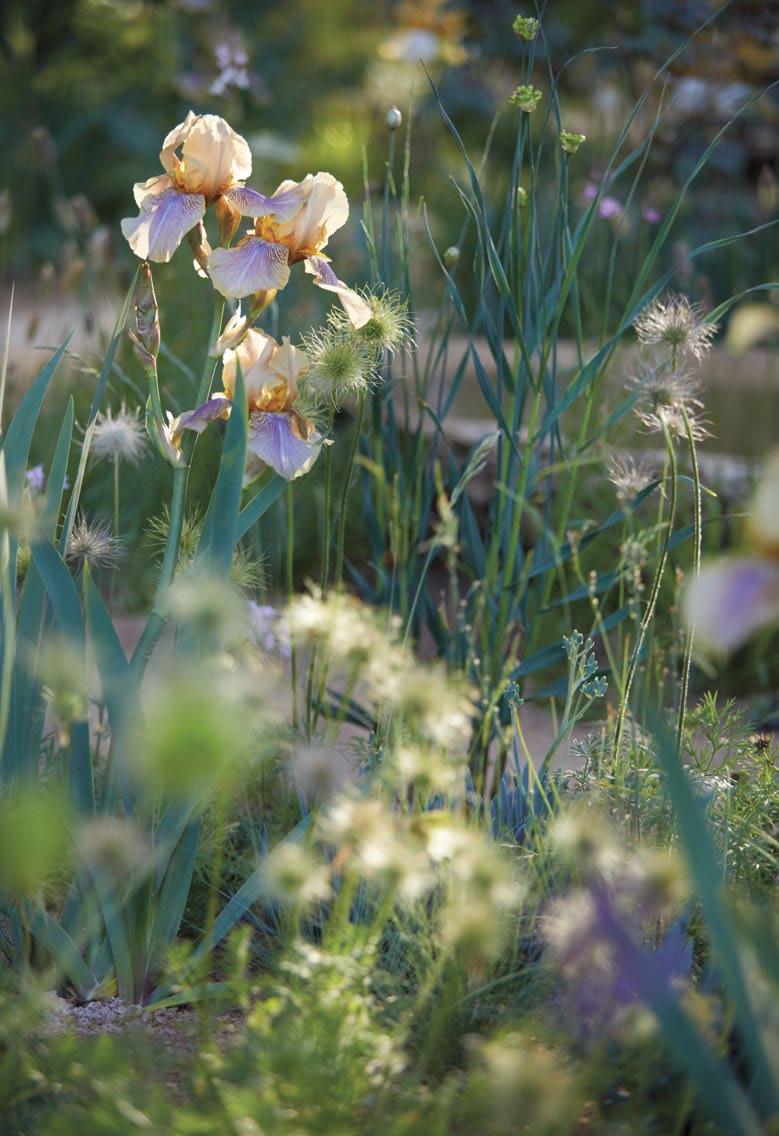
If you’re looking to fill a bigger space in your border, or indeed are starting with a blank canvas, then look no further than our mini-border collections, curated by some of the country’s leading Garden Designers and based on their medal winning gardens at Chelsea Flower Show, grown and built by the team here at Crocus. From Tom Stuart-Smith’s dreamlike woodland planting scheme from Chelsea 2024 to Sarah Price’s celebrated painterly scheme, these mini collections enable you to recreate awardwinning Chelsea looks at home. Visit www.crocus.co.uk/curatedcollections
Pete is one of our Co-founders here at Crocus, and leads our Wholesale team. Working closely with Garden Designers, Pete sources plants and trees for some of the most exciting landscaping projects in the UK.
Acelebrated Garden Designer once described me as a ‘plant omnivore’. Perhaps this is just as well, given that I spend my time searching for plants for all the extraordinary landscaping projects that we, in the Wholesale department, get to work on. Things on our side of the business move in a measured fashion, and it may take several years for a project to gain traction or even longer for fruition. At any one time, we may be working on 150 projects, so there’s always something interesting going on. Here’s a glimpse at some of the gardens we have been involved with.

Big projects start with sourcing trees in Europe. Trees are probably my passion and luckily I often get given the enviable task of ‘tree tagging’, which involves working with the best tree nurseries to search for beautiful specimens. This tree is part of a batch of 230 that I am hoping will be chosen by a designer for a project in Oxford. We have already planted over 400 magnificent trees like these there, including 27 beauties used in 7 of our Gold Medal winning Chelsea gardens.


One of my highlights of the last few years was working with Tom Stuart-Smith to remodel large areas of the gardens at Chatsworth. For the first phase, Arcadia, we were asked to provide 40,000 plants that were to be grown peat free and delivered in compostable pots. This was the first time we had grown to order in peat free compost, and we were delighted by the result. It was a good test and paved the way for the whole nursery to move to peat free.

It’s a privilege of the job that I get to be on site when planting starts. The Chatsworth planting was done in perfect conditions in November 2021 and this allowed us to use around a third of the plants ‘bare root’. These are plants that have been lifted from stock beds, had their roots washed free of soil, then layered with damp compost in trays for transportation prior to planting. It’s a technique which has been around a long time, and how plant nurseries used to sell their plants.
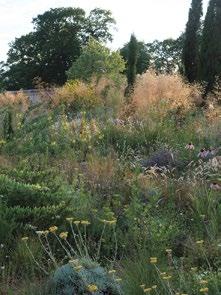
We’re lucky enough to work with some of the world’s best designers and the Walled Garden at Kneep has been one of our most exciting challenges. The idea is to create something akin to an idealised prairie, combining seeds and plants from many parts of the globe along with native species in an eye-catching display of diversity. The result is sublime and a tribute to the close collaboration of designers Tom Stuart-Smith and James Hitchmough. How lucky and privileged are we!
with Julia Leakey

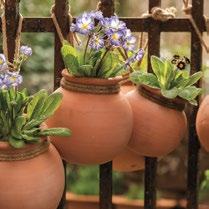
Plant hanging pots for early colour
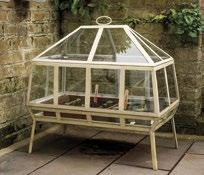
Start growing early In smaller spaces like mine, plants and products have to earn their place. They must look good and work well! Start growing early by creating a warm, humid and safe environment for them to flourish. The snug-fit lid can be taken off or rotated for ventilation and watering.
I love to fill pots with early flowering plants for a jolly start to the season. Use different sizes of these hand thrown, rope-hung pots in clusters to hang on a wall, fence or even off the garden gate.
Terracotta babylon hanging pot £19.99£24.99
Fill gaps in borders with pin point accuracy As the garden starts to grow and fill out, inevitably there will be gaps. It’s tricky manoeuvring standard tools in tight spaces so I have developed this very handy slim line tool especially for planting in more densely populated borders. So easy and satisfying! Pinpoint hole maker for young plants/bulbsCrocus by DeWit Large - £54.99

Victorian growhouse rectangular £239.99
Julia is our in house designer for the Crocus Collection. A very keen gardener herself, she designs products for every kind of garden and works with skilled artisans to curate tools which are not only practical but beautiful. Here are her favourite tools to use for the spring and summer season.
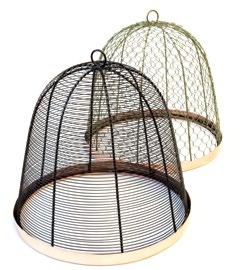
Get slug and snail defences in place early
The fibrous texture of wool acts as an irritant to slugs and snails. They prefer a relatively smooth surface so they can glide along on their slime! I have designed these pots with a groove in the middle to tie and keep a woollen pot scarf in place and keep the pesky molluscs out.
Terracotta slug and snail resistant pot £34.99£55.98
Protect tender new growth
There’s nothing more depressing than the tips of new growth being munched. These woven wire cloches can be used to keep deer, rabbits, squirrels and birds away. Their base has been encircled with a rim of copper, which will also help protect plants from slugs and snails.
Copper rimmed cloche £39.99
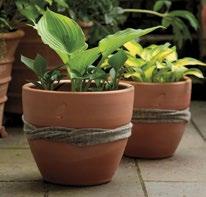

In the spring & summer, I can’t live without
My garden stake rain gauge. The generous glass vessel collects rain and helps me gauge the amount of water that has collected in the pots at a glance from my kitchen window.
Garden stake rain gauge £54.99

Bex Partridge, Floral Artist
I’m Bex Partridge, founder of Botanical Tales and creative floral designer. My work is centred around the seasons and wholly inspired by the natural world, working predominantly with dried and foraged plant materials. I’m an author of three books, teach workshops as well as create floral art for people's spaces.
Planting a cutting garden for drying is much easier than you'd imagine. Now is a great time to get planning to ensure you have bountiful blooms for drying later in the season.
With the weather becoming more and more unpredictable, with cold springs and heavy rain throughout the winter and subdued temperatures in the summer, I’ve begun to shift my focus away from annual plants towards perennials when it comes to the garden. Perennials by their nature are hardier and more reliable than annuals, as well as offering beautiful, interesting textures and tones to work with. A perennial cutting garden also offers us year round interest in the garden in a way that annuals simply don’t.
When planning my perennial garden I will consider the location of the site, for example I’m surrounded by trees in my garden here in Devon so I will look at light levels and choose plants that can handle a little shade. Other factors to consider to help you decide which plants are right for your garden are your soil type (heavy clay here!) as well as the impact from any prevailing weather. Living on top of a hill means we are continually buffeted by strong westerlies so I introduce grasses
to sit alongside my perennials to offer them structure and support when the winds are blowing.
I will also pay attention to the shapes of the flowers and grasses. I’m interested in sculptural heads of flowers and seedheads coupled with the flow of ethereal grasses to complement and soften. This applies to both whilst the plants are growing in the garden and then also when they are to be worked with.
When it comes to knowing which plants will dry well, this all comes down to experience and experimentation. From early summer right the way through to the end of November I’ll be cutting stems to bring inside to dry. Most grasses will dry really well and with perennials it is worth considering them for both their flower heads and latterly their seedheads. Make notes of picking times and how they dried so you can remember for following years. I will always leave a few flower stems in situ for the insects to over winter and to ensure structural interest in the garden is maintained.
Discover Bex’ favourite flowers for drying and more information on how to create floral designs at www.crocus.co.uk/features/inspiration/bex-partridge
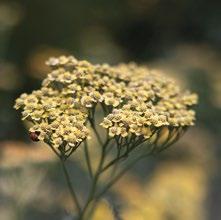


My favourite plants for drying (anti-clockwise from top):
Achillea 'Terracotta', Alchemilla mollis, Sanguisorba 'Tanna', Astrantia 'Moulin Rouge' (PBR), Miscanthus sinensis 'Gracillimus', Pennisetum 'Fairy Tails'


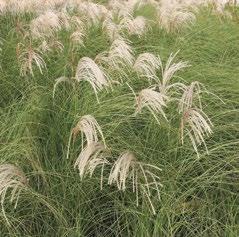
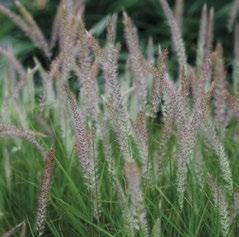
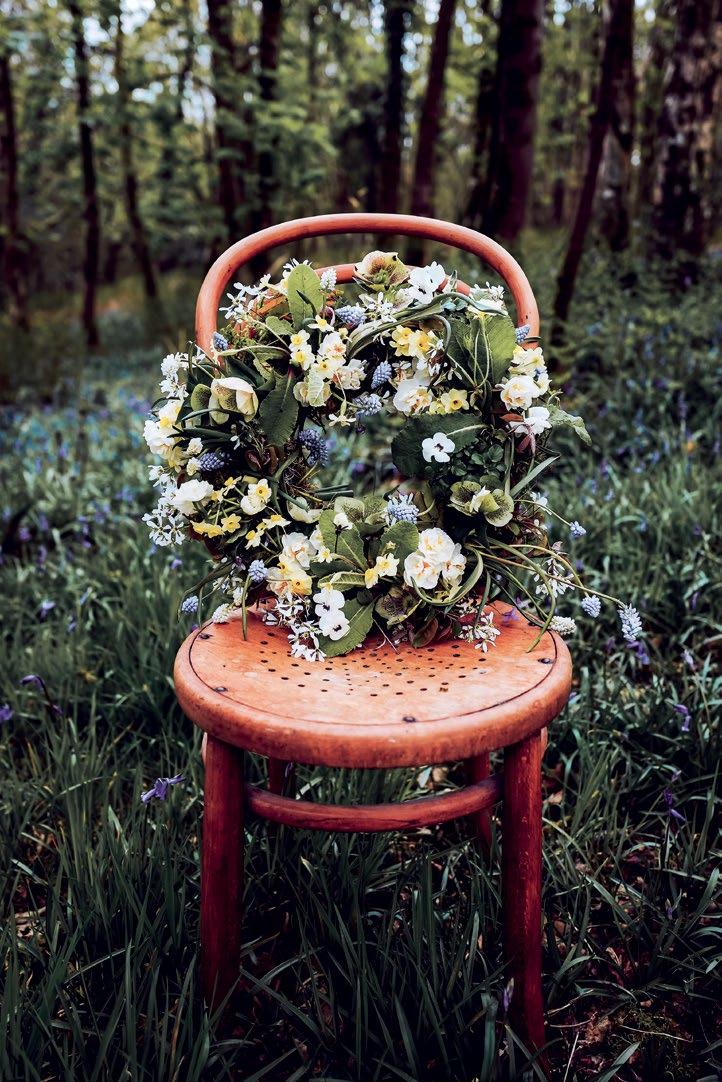
Taken from her latest book, Crafting with Flowers, in this extract Bex guides us on how to make a Living Wreath from foraged plants.
I build these wreaths on a moss base, which helps to retain water in the bulbs and plants that are carefully nestled in among the foliage and blossoms. These wreaths are best hung on a front door outside, where they will benefit from the spring damp and rains.
Method
1. Working with a vine wreath base, wrap layers of moss around the vines to cover them completely, tying in place with a length of twine, or if you prefer wire.
2. Using your fingers or a stick, create small pockets within the moss to nestle larger plants such as primroses in. Carefully place the primroses in these little pockets, keeping some soil around the roots of the plants to ensure they are nourished and their roots won't dry out. Wrap the wire around the plant and the moss base to secure them together.
3. Next add in the bulbs. I like to leave the bulbs exposed as I adore their structural shapes, although they won't last as long if you decide to do this. Alternatively,
tuck them into the moss surrounded by a layer of compost in the same way you added in the plants. When leaving the bulbs exposed, wrap the wire carefully around the top where the stem meets the bulb and then secure to the wreath base by wiring them together.
4. From a design perspective, I like to cluster similar flowers together, much as they would appear in the wild; nestle 2-3 primroses in one place, and do similarly with the bulbs.
6. Keep going until the wreath looks full and abundant, appreciating that some of the moss will remain exposed as it is part of the beautiful design.
7. Secure a loop of wire from the top of the wreath base from which to hang it.
8. Once the plants and bulbs begin to wane, simply dismantle the wreath and plant them out in the garden for next spring. The moss wreath base can be saved and reused.
Crafting with Flowers by Bex Partridge published by Quadrille April 2025. Available for pre-order now on Amazon.
5. Once your living plants are in place, carefully add in the flower and foliage stems. Here I have clustered together a few stems of sweet-smelling narcissi by making a little bunch held together with wire and carefully feeding it into the moss base. Dot foliage around the flowers to add interest.
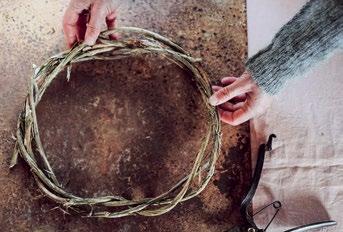

with Clare Joiner

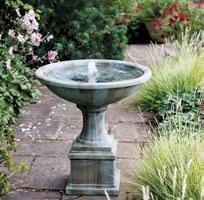
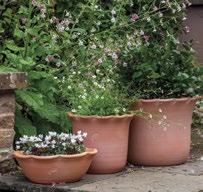

Blue enamel cut out tealight lantern
£9.99, Blue enamel cut out lantern with jute handle £21.99
Tulip tealight holder - brass £32.99, Tulip tealight holder -


Take the living outside this season with our Golden Hour Collection of garden furniture, pots and accessories that capture the magic of the peachy sunset hour. We’ve curated this collection using elegant neutral tones highlighted with terracotta and zinc, that allow you to seamlessly slip from memorable moments with the family to elegant evenings with friends.


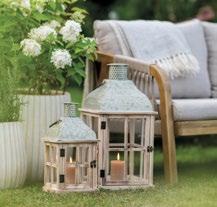
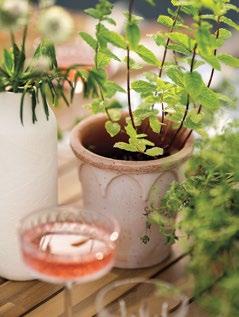
As garden lovers, the idea of heading indoors when the sun starts to set, feels like a terrible waste. It’s our moment to finally relax, kick-back and enjoy the fruits of our garden labours. Which is why we’ve put this collection together to enable you to spend more time outside this season. Discover more at www.crocus.co.uk/outdoor

By Clare Joiner, Head of Product Buying at Crocus
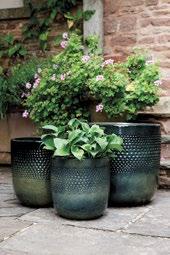




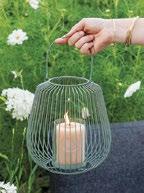


Treat your home like a hotel with our Hoxton collection. Designed to make you feel that a weekend in the garden is like treating yourself to a stay in a smart hotel. We’ve created this collection to feature clean lines and a sophisticated palette of deep tones, highlighted with earthy neutrals, ideal for lazy days with the papers, as well as chic evenings with friends.
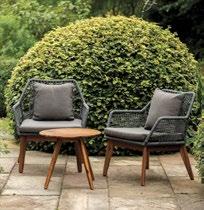



Alice Vincent is on a quest to understand why women go to ground when there's so much else to do. In the Why Women Grow podcast, sponsored by Crocus, Alice has intimate conversations in the gardens of designers, chefs, writers and more.
We entertain all manner of thoughts about our gardens, so often in the vein of what we should or could be doing. But for the past few years I’ve been preoccupied with one question, directed mostly at women who garden: why do you grow?
I first asked it in my one-bedroom flat, with the balcony garden that looked over some woodland in South London, in the grip of the pandemic. That became a book - Why Women Grow. But nearly five years on and I’m delighted to say I’m still looking for answers - and I’ve allowed thousands of people to listen in through the Why Women Grow podcast.
I’ve asked nearly 60 women why they grow, from punk icon Cosey Fanni Tutti to householdname chef Anna Jones, usually in their gardens and sometimes on stage, and the only thing that connects all of them is that the answers keep surprising me.
I’m fascinated with the reasons as to why women grow because it turns out that our gardens hold more than we can possibly imagine. Memories of our womanhood, tethers to the women who raised us - and the ones that we raised ourselves - and insight into the important lessons we want to hold in life. My quest to learn about women’s relationship with the earth has taken me from botanic gardens to high-rise balconies, havens of herbal
medicine to organic vineyards in Provence. In each, among the earth, women have found the resources they need to grow plants for food, beauty, resistance, resilience and community. They are spaces where women have taken their grief, their courage and their joy.
This year, I’m delighted to say that we are having more conversations on the Why Women Grow podcast - and thanks to our partnership with Crocus we are stretching further and digging deeper than ever before. Our first season will plumb into the beautiful mysteries of the soil beneath our feet, with conversations with Bridget Elworthy and Henrietta Courtauld of The Land Gardeners. We head to Scotland to hear a new perspective on fungi from musician Hannah Reed and to the peat bogs of Swansea with artist Manon Awst.
This year we’ll also be offering a rare female perspective on the RHS Chelsea Flower Show, with interviews from some of its most admired female designers as well as recording an episode live with Jo Thompson and Kali Homerton Stove, pulling back the curtain on being a woman at the world’s most famous gardening event. And you’ll be able to listen along to it all, wherever you get your podcasts.
Alice Vincent is an author and broadcaster. Season 2 of the Why Women Grow podcast, sponsored by Crocus, is out in February, listen wherever you get your podcasts.
